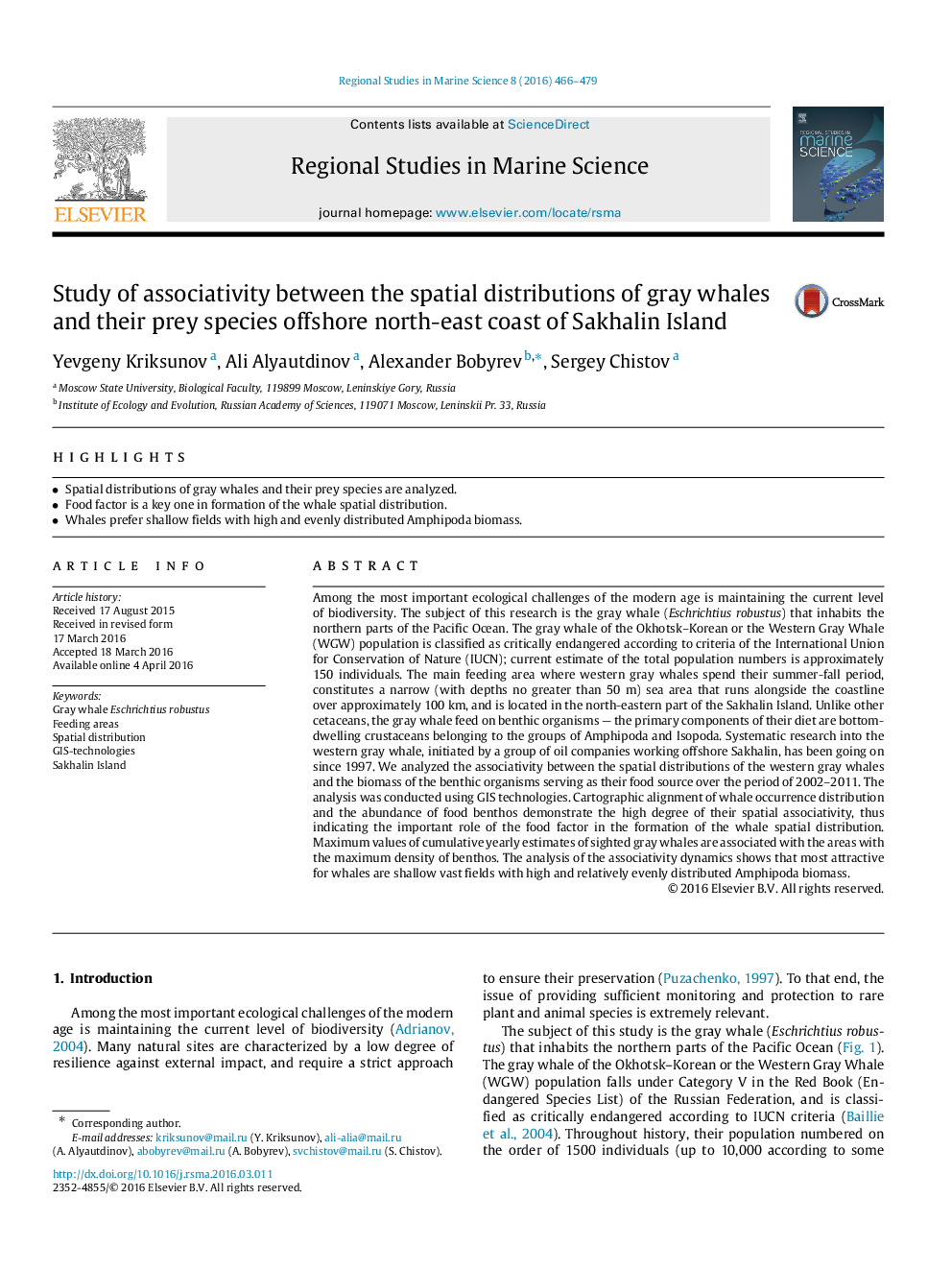| کد مقاله | کد نشریه | سال انتشار | مقاله انگلیسی | نسخه تمام متن |
|---|---|---|---|---|
| 5758190 | 1412747 | 2016 | 14 صفحه PDF | دانلود رایگان |
- Spatial distributions of gray whales and their prey species are analyzed.
- Food factor is a key one in formation of the whale spatial distribution.
- Whales prefer shallow fields with high and evenly distributed Amphipoda biomass.
Among the most important ecological challenges of the modern age is maintaining the current level of biodiversity. The subject of this research is the gray whale (Eschrichtius robustus) that inhabits the northern parts of the Pacific Ocean. The gray whale of the Okhotsk-Korean or the Western Gray Whale (WGW) population is classified as critically endangered according to criteria of the International Union for Conservation of Nature (IUCN); current estimate of the total population numbers is approximately 150 individuals. The main feeding area where western gray whales spend their summer-fall period, constitutes a narrow (with depths no greater than 50 m) sea area that runs alongside the coastline over approximately 100 km, and is located in the north-eastern part of the Sakhalin Island. Unlike other cetaceans, the gray whale feed on benthic organisms - the primary components of their diet are bottom-dwelling crustaceans belonging to the groups of Amphipoda and Isopoda. Systematic research into the western gray whale, initiated by a group of oil companies working offshore Sakhalin, has been going on since 1997. We analyzed the associativity between the spatial distributions of the western gray whales and the biomass of the benthic organisms serving as their food source over the period of 2002-2011. The analysis was conducted using GIS technologies. Cartographic alignment of whale occurrence distribution and the abundance of food benthos demonstrate the high degree of their spatial associativity, thus indicating the important role of the food factor in the formation of the whale spatial distribution. Maximum values of cumulative yearly estimates of sighted gray whales are associated with the areas with the maximum density of benthos. The analysis of the associativity dynamics shows that most attractive for whales are shallow vast fields with high and relatively evenly distributed Amphipoda biomass.
Journal: Regional Studies in Marine Science - Volume 8, Part 3, November 2016, Pages 466-479
